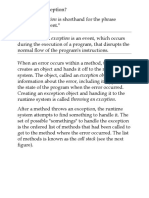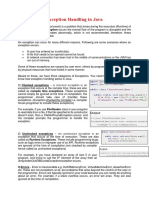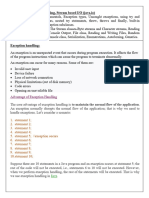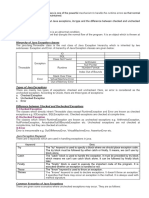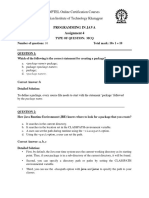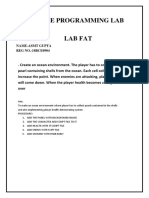0% found this document useful (0 votes)
8 views23 pagesException Handling in Java
The document provides an overview of exception handling in Java, detailing the types of exceptions (checked, unchecked, and errors) and their differences. It explains how to use try-catch blocks for handling exceptions, along with examples of common exceptions such as ArithmeticException and NullPointerException. Additionally, it emphasizes the importance of exception handling for maintaining the normal flow of applications and improving code reliability.
Uploaded by
ranjith kumarCopyright
© © All Rights Reserved
We take content rights seriously. If you suspect this is your content, claim it here.
Available Formats
Download as DOCX, PDF, TXT or read online on Scribd
0% found this document useful (0 votes)
8 views23 pagesException Handling in Java
The document provides an overview of exception handling in Java, detailing the types of exceptions (checked, unchecked, and errors) and their differences. It explains how to use try-catch blocks for handling exceptions, along with examples of common exceptions such as ArithmeticException and NullPointerException. Additionally, it emphasizes the importance of exception handling for maintaining the normal flow of applications and improving code reliability.
Uploaded by
ranjith kumarCopyright
© © All Rights Reserved
We take content rights seriously. If you suspect this is your content, claim it here.
Available Formats
Download as DOCX, PDF, TXT or read online on Scribd
/ 23














